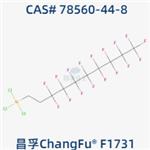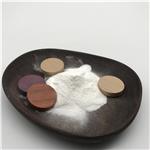Applications of 1H,1H,2H,2H-Perfluorodecyltrichlorosilane
Dec 20,2019
1H,1H,2H,2H-Perfluorodecyltrichlorosilane, also known as FDTS, is a colorless liquid chemical with molecular formula C10H4Cl3F17Si. FDTS molecules form self-assembled monolayers. They bond onto surfaces terminated with hydroxyl (-OH) groups, such as glass, ceramics, or SiO2 forming a regular covalent bond. It anchors on oxide surfaces with its tricholoro-silane group and attaches covalently. Due to its heavily fluorinated tail group, a FDTS monolayer reduces surface energy. Deposition of a FDTS monolayer is achieved by a relatively simple process, also known as molecular vapor deposition (MVD) It usually deposits from a vapor phase, at room to near-to-room temperatures (50°C) and is thus compatible with most substrates. The process is usually carried out in a vacuum chamber and assisted by the presence of water vapor. Treated surfaces have water repellent and friction reducing properties [1].

Application
A FDTS monolayer is often applied to movable microparts of microelectromechanical systems (MEMS). A FDTS monolayer reduces surface energy and prevents sticking, so they are used to coat micro- and nano-features on stamps for a nanoimprint lithography which is becoming a method of choice for making electronics, organic photodiodes, microfluidics and other. Reduced surface energy is helpful for reduction of ejection force and demolding of polymer parts in an injection molding and FDTS coating was applied onto some metallic injection molding molds and inserts [1]. Further, it is used to coat micro-nano features on stamps for a nano imprint lithography. In addition, it is used in the preparation of other products by reacting with methanol [2].
Advantages
The material perfluorodecyltrichlorosilane (FDTS) has been widely applied for anti-sticking coating in Nanoimprint Lithography (NIL). The FDTS coating is acknowledged by its processing simplicity that requires uncomplicated facilities at wide-range temperature conditions. The monolayer coating in a thickness of single molecule suits applications in terms of optical compatibility. Its long-tail consisting of 17 fluorine atoms provides convenient antisticking properties. Therefore, these significant properties of FDTS make it advantageous in additional fields as well, such as electrowetting on dielectrics (EWOD) [6] or microfluidics in general [3].
Reference
[1] https://www.molbase.com/en/overview_78560-44-8-moldata-112490.html
[2]https://www.chinacouplingagents.com/organic-silane/fluoro-silane/1h-1h-2h-2h-perfluorodecyltrichlorosilane-cas.html
[3] Gunther, Sarah , et al. "FDTS as Dewetting Coating for an Electrowetting Controlled Silicon Photonic Switch." IEEE Photonics Technology Letters 30.23(2018):2005-2008.
- Related articles
- Related Qustion
6-Bromohexanoic acid is used in the preparation of N-acylsulfonamides, diarylthioethers and 2-lithio-1,3-dithian. It is widely used as an intermediate in organic synthesis [2]. Here, we introduced a method for making this compound.....
Dec 20,2019Organic Synthesis IntermediateEthanesulfonic acid is an alkanesulfonic acid in which the alkyl group directly linked to the sulfo functionality is ethyl [1], and it is a conjugate acid of an ethanesulfonate. employed in the electrolytic reduction of perrhenate solutions....
Dec 20,2019Chemical Reagents1H,1H,2H,2H-Perfluorodecyltrichlorosilane
78560-44-8You may like
1H,1H,2H,2H-Perfluorodecyltrichlorosilane manufacturers
- 1H,1H,2H,2H-Perfluorodecyltrichlorosilane
-

- $0.00 / 1kg
- 2025-12-23
- CAS:78560-44-8
- Min. Order: 1kg
- Purity: 96%
- Supply Ability: 20t
- 1H,1H,2H,2H-Perfluorodecyltrichlorosilane
-

- $0.00 / 25kg
- 2025-06-27
- CAS:78560-44-8
- Min. Order: 1kg
- Purity: 99%
- Supply Ability: 500000kg
- CHLUMOFIUOR? Perfluorooctylethyltrichlorosilane
-

- $0.00 / 1kg
- 2025-04-10
- CAS:78560-44-8
- Min. Order: 1kg
- Purity: 99%
- Supply Ability: 20 tons






